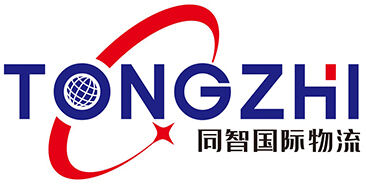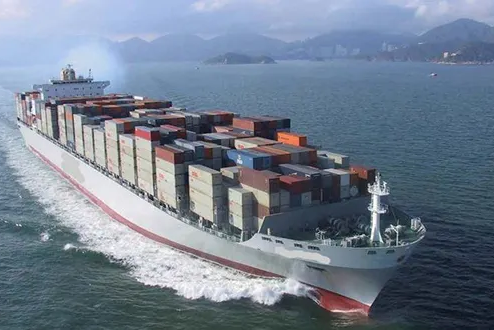Przewozy kontenerowe są podstawą międzynarodow globalnego handlu, umożliwiając efektywne i bezpieczne przemieszczanie towarów na całym świecie. W obliczu stale rosnącego popytu na handel międzynarodowy, przedsiębiorstwa muszą zrozumieć subtelności przewozu kontenerowego, aby zoptymalizować swoje operacje logistyczne. W tym artykule omówiono najlepsze praktyki i kluczowe zagadnienia dotyczące maksymalizacji efektywności w przewozie kontenerowym.
Rozumienie przewozu kontenerowego
Transport kontenerowy obejmuje przewożenie towarów w dużych, standardowych kontenerach. Te kontenery dostępne są w różnych rozmiarach, przy czym najczę najpopularniejsze są kontenery 20-stopniowe i 40-stopniowe. Standardyzacja pozwala na płynny przenoszenie między statkami, ciężarówkami i pociągami, co czyni go versatile i wydajnym sposobem transportu.
Główne zalety transportu kontenerowego
Efektywność: Kontenery zostały zaprojektowane do łatwego obsługiwanie i stosowania, co przyspiesza proces ładowania i rozładunku w portach. Ta efektywność oznacza szybsze czasy tranzytu i obniżone koszty.
Bezpieczeństwo: Towary przewożone w kontenerach są mniej narażone na uszkodzenia i kradzież. Mocna konstrukcja kontenerów oferuje doskonałą ochronę przed elementami zewnętrznymi i potencjalnym rabunkiem.
Kosztowność: Transport kontenerowy jest ogólne bardziej opłacalny niż inne rodzaje transportu, zwłaszcza w przypadku dalekopisywnych przesyłek międzynarodowych. Możliwość skonsolidowania wielu przesyłek w jednym kontenerze dalej obniża koszty.
Unikalność: Kontenery mogą przewozić szeroki zakres towarów, od surowców i maszyn po produkty spożywcze i gotowe produkty. Specjalistyczne kontenery, takie jak chłodnicze (reefers), odpowiadają konkretnym potrzebom, takim jak kontrola temperatury.
Najlepsze praktyki w przewozie kontenerowym
Wybierz odpowiedni typ kontenera
Wybór odpowiedniego typu kontenera jest kluczowy dla bezpiecznej i efektywnej dostawy towarów. Standardowe kontenery suchych towarów są odpowiednie dla większości rodzajów ładunków, ale przedsiębiorstwa powinny rozważyć użycie specjalistycznych kontenerów w przypadku konkretnych potrzeb:
Kontenery chłodnicze (Reefers): Do towarów perełkowych wymagających kontroli temperatury.
Kontenery otwarte (Open-Top): Do nadmiarowo dużych ładunków, które nie mieszczą się w standardowym kontenerze.
Kontenery platformowe (Flat Rack): Do ciężkich i wielkoformatowych przedmiotów, takich jak maszyny i pojazdy.
Zoptymalizuj wykorzystanie kontenerów
Maksymalne wykorzystanie dostępnej przestrzeni wewnątrz kontenera może znacząco obniżyć koszty przewozu. Przedsiębiorstwa powinny:
Poprawne pakowanie i układywanie towarów: Upewnij się, że towary są securely pakowane, aby zapobiec przesunięciom podczas transportu.
Używaj palet i nart: Ułatwia to łatwe obsługa i efektywne wykorzystanie miejsca.
Zrównoważ rozkład wagi: Równomiernie rozdziel wagę, aby utrzymać stabilność i zapobiec uszkodzeniom.
Wprowadź zaawansowane systemy śledzenia
Śledzenie i monitorowanie przesyłek w czasie rzeczywistym oferują cenne wglądy i zwiększają widoczność w całym procesie wysyłki. Zaawansowane systemy śledzenia oferują:
Aktualizacje lokalizacji w czasie rzeczywistym: Informuj biznesy o lokalizacji i stanie ich przesyłek.
Monitorowanie warunków: Upewnij się, że towar wrażliwy na temperaturę pozostaje w wymaganym zakresie.
Analiza predykcyjna: Antycypuj potencjalne opóźnienia i optymalizuj trasy dla szybszej dostawy.
Zapewnij zgodność z regulacjami
Zgodność z międzynarodowregulacjami międzynarodowmiędzynarodowymi dotyczącymi wysyłki jest kluczowa, aby uniknąć opóźnień i kar. Firmy powinny:
Bądź na bieżąco z przepisami handlowymi: Utrzymuj aktualność w kwestii praw importu/eksportu i wymagań celnyczych dla każdego miejsca docelowego.
Przygotowywuj dokładne dokumenty: Upewnij się, że wszystkie niezbędne dokumenty, takie jak listy towarowe, certyfikaty pochodzenia i deklaracje celne, są poprawnie wypełnione i przesłane w terminie.
Współpracuj z doświadczonymi maklerami celnymi: Ułatwij gładkie przekazywanie przez cło i zmniejsz ryzyko problemów związanych z kompliancją.
Wykorzystaj technologię do zwiększenia efektywności
Technologia odgrywa kluczową rolę w optymalizacji operacji przewozowych kontenerowych. Firmy powinny wprowadzić:
Oprogramowanie do zarządzania przewozami: Uprość rezerwację, dokumentację i procesy śledzenia.
Automatyczne systemy obsługi ładunków: Pryspiesz operacje ładowania i rozładunku w portach.
Technologia blockchain: Zwiększ przejrzystość i bezpieczeństwo łańcucha dostaw, oferując niezmienny rekord transakcji i ruchów.
Kluczowe zagadnienia dotyczące przewozów kontenerowych
Zarządzanie kosztami
Koszty przesyłek mogą znacząco wpływać na wyniki finansowe firmy. Kluczowe strategie zarządzania kosztami obejmują:
Konsolidacja przesyłek: Połącz wiele przesyłek w jeden kontener, aby skorzystać z efektów ekonomicznych skal.
Negocjacje umów: Uzyskaj korzystne stawki i warunki z linii transporotowych i forwarderów.
Optymalizacja tras: Wybierz najbardziej efektywne i opłacalne trasy, aby zminimalizować czasy tranzytu i zmniejszyć zużycie paliwa.
zarządzanie ryzykiem
Zarządzanie ryzykami związane z transportem kontenerowym jest kluczowe dla bezpiecznej i punktualnej dostawy towarów. Rozważ następujące aspekty:
Ubezpieczenia: Ochrona przed potencjalnymi
stratami z powodu uszkodzeń, kradzieży lub opóźnień.
Planowanie awaryjne: Opracuj plany reagowania na nieprzewidziane zakłócenia, takie jak strajki w porcie czy katastrofy naturalne.
Regulaminne audyty: Przeprowadzaj audyty procesów logistycznych i partnerów, aby zidentyfikować i zmniejszyć ryzyka.
praktyki zrównoważonego rozwoju
Zrównoważony rozwój staje się coraz ważniejszy w globalnej logistyce. Firmy mogą przyjąć ekologiczne praktyki, takie jak:
Używanie Oszczędzających Paliwo Statków: Wybierz linie żeglugowe, które korzystają z nowoczesnych, oszczędzających paliwo statków, aby zmniejszyć emisję dwutlenku węgla.
Wprowadzanie Zielonych Rozwiązań Opakowań: Używaj recyklowalnych i biodegradowalnych materiałów opakowaniowych, aby zminimalizować wpływ na środowisko.
Kompensowanie Emisji Węglowych: Weź udział w programach kompensacji emisji węglowych, aby zneutralizować ekologiczny ślad działalności związanej z przewozem morskim.
Wnioski
Przewóz kontenerowy jest kluczowym elementem międzynarodowego handlu, oferując efektywność, bezpieczeństwo i kosztowność. Implementując najlepsze praktyki, takie jak wybór odpowiedniego typu kontenera, optymalizacja wykorzystania kontenerów, wykorzystywanie zaawansowanych systemów śledzenia, zapewnianie zgodności regulacyjnej i przyjmowanie technologii, przedsiębiorstwa mogą maksymalizować korzyści płynące z przewozu kontenerowego. Ponadto, zarządzanie kosztami, łagodzenie ryzyk i adoptowanie praktyk zrównoważonego rozwoju są kluczowe dla utrzymania konkurencyjnej przewagi na rynku globalnym.







































